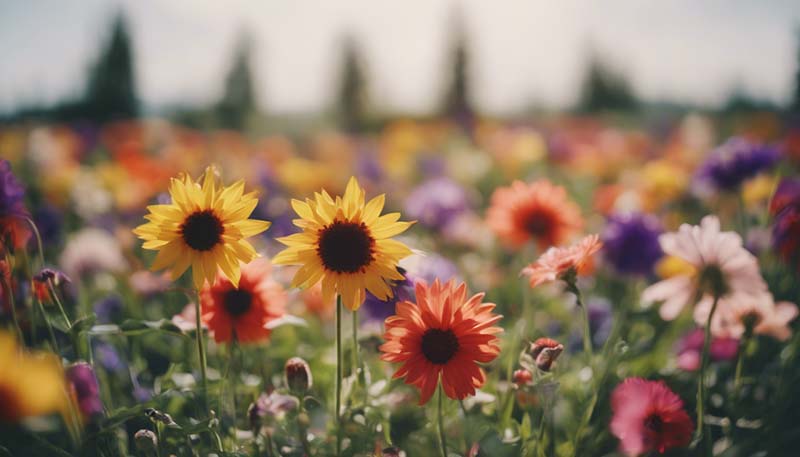Seasonal Flower Power: How to Choose the Right Varieties
Maintenance | 2024-02-18
Flowers are a beautiful way to enhance our living spaces and gardens. They not only add vibrant colors but also attract pollinators and create a pleasant atmosphere. However, selecting the right seasonal flowers can be a daunting task due to the vast variety available. This article will guide you through the process of choosing the right seasonal flower varieties to ensure your garden is a blooming success all year round.
**Understanding Seasons and Their Flowers**
The first step in choosing the right flowers is to understand the climate and seasonal changes in your area. Flowers can be categorized into spring, summer, autumn, and winter bloomers, each with their own set of requirements and characteristics.
- **Spring Bloomers:** These flowers are the first to emerge after the cold winter months. They thrive in cooler temperatures and longer daylight hours. Examples include tulips, daffodils, and hyacinths.
- **Summer Bloomers:** These flowers love the warmth and long days of summer. They require full sun and well-drained soil. Examples include roses, sunflowers, and petunias.
- **Autumn Bloomers:** As the weather cools, these flowers come into their own. They can tolerate cooler temperatures and are often the last to bloom before winter. Examples include asters, chrysanthemums, and sedum.
Advertisement
- **Winter Bloomers:** These are the hardy flowers that can withstand the cold and may even bloom in the snow. Examples include hellebores, winter jasmine, and Christmas roses.
**Consider Your Garden's Conditions**
Before you start shopping for flowers, take a good look at your garden. Consider the following:
- **Sunlight:** How many hours of sun does your garden receive each day?
- **Soil Type:** Is your soil sandy, clay, or loamy? What is the pH level?
- **Water Availability:** How much water does your garden naturally receive? Are you able to provide supplemental watering?
- **Space:** How much space do you have for new plants?
**Choose Flowers for Their Hardiness**
Hardy flowers are those that can survive the worst that your local climate can throw at them. For example, in regions with harsh winters, choose perennials and shrubs that are rated for your specific hardiness zone.
**Consider the Pollinators**
Many flowers are pollinator magnets. If you want to attract bees, butterflies, and hummingbirds, choose flowers that are known to draw these creatures in. Native plants are often the best bet as they have evolved alongside local pollinators.
**Think About Maintenance**
Some flowers require more care than others. If you're going for a low-maintenance garden, opt for flowers that are drought-tolerant, resistant to local pests, and don't require deadheading or extensive pruning.
**Complement Your Garden's Aesthetic**
The look and feel of your garden are important. Choose flowers that complement the existing color scheme and style of your garden. Consider the height and spread of the plants to ensure they fit well within the overall design.
**Layer Your Garden with Perennials and Annuals**
Perennials provide a backbone to your garden, returning year after year. Annuals, on the other hand, offer a burst of color for a single season but can be easily replaced with different varieties each year to keep your garden looking fresh.
**Try Companion Planting**
Some flowers grow better when planted next to certain other plants. This is due to a variety of factors, including pest control, pollination, and soil improvement. Research companion planting to get the most out of your flower bed.

**Resist the Urge to Overcrowd**
It's tempting to pack as many flowers as possible into your garden, but overcrowding can lead to competition for resources and a lack of air circulation, which can cause diseases. Give each plant the space it needs to thrive.
**Aftercare is Key**
Once you've chosen and planted your flowers, proper aftercare is crucial. This includes regular watering (but not overwatering), feeding with the right fertilizer, and protecting your plants from pests and diseases.
**Conclusion**
Choosing the right seasonal flower varieties for your garden is a rewarding process that requires a bit of planning and research. By considering the season, your garden's conditions, the hardiness of the plants, the needs of local pollinators, maintenance requirements, aesthetic preferences, and the principles of companion planting, you can create a garden that blooms with beauty and vitality throughout the year.
Comments